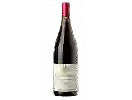
Domaine des GillieresVignoble de La Minée Blanc
This wine generally goes well with fruity desserts, lean fish or shellfish.
The Vignoble de La Minée Blanc of the Domaine des Gillieres is in the top 90 of wines of Loire Valley.
Food and wine pairings with Vignoble de La Minée Blanc
Pairings that work perfectly with Vignoble de La Minée Blanc
Original food and wine pairings with Vignoble de La Minée Blanc
The Vignoble de La Minée Blanc of Domaine des Gillieres matches generally quite well with dishes of shellfish, lean fish or fruity desserts such as recipes of flambéed prawns, gratin of cod with spinach or rice with milk.
Details and technical informations about Domaine des Gillieres's Vignoble de La Minée Blanc.
Discover the grape variety: Chenin blanc
It most certainly originates from the Anjou region and is registered in the official catalogue of wine grape varieties on the A1 list. It can also be found in South Africa, Australia, Argentina, Chile, the United States (California), New Zealand, etc. It is said to be a descendant of Savagnin and to have sauvignonasse as its second parent (Jean-Michel Boursiquot 2019). On the other hand, Chenin blanc is the half-brother of verdelho and sauvignon blanc and is the father of colombard.
Last vintages of this wine
The best vintages of Vignoble de La Minée Blanc from Domaine des Gillieres are 2016
Informations about the Domaine des Gillieres
The Domaine des Gillieres is one of of the world's greatest estates. It offers 16 wines for sale in the of Loire Valley to come and discover on site or to buy online.
The wine region of Loire Valley
The Loire Valley is a key wine region in western France. It follows the course of the Loire River on its Long journey through the heart of France, from the inland hills of the Auvergne to the plains of the French Atlantic coast near Nantes (Muscadet country). Important in terms of quantity and quality, the region produces large quantities (about 4 million h/l each year) of everyday wines, as well as some of France's greatest wines. Diversity is another of the region's major assets; the styles of wine produced here range from the light, tangy Muscadet to the Sweet, honeyed Bonnezeaux, the Sparkling whites of Vouvray and the juicy, Tannic reds of Chinon and Saumur.
News related to this wine
At the heart of the Mâcon terroir
In line with our previous videos « The Climats of Chablis seen from the sky » and « The vineyards of Bourgogne, seen from the sky » », the Bourgogne Wine Board (BIVB) and the Union des Producteurs de Vins de Mâcon offer you a new stroll at the heart of the Mâcon terroir. Established in 1937, this Régionale appellation is divided into three levels: – The first level is known as white, red or rosé Mâcon. The grapes used can come from all around the Mâconnais. – The second level is name ...
The Mâcon plus appellation seen by Théo et Hugo Merlin
Théo and Paul Merlin are winegrowers at the Domaine Merlin, they emphasizes the characteristics of the appellation Mâcon La Roche Vineuse. This video is taken from the “Rendez-vous avec les vins de Bourgogne” program (March 2020). Our social media: Facebook: https://www.facebook.com/BourgogneWines Twitter: https://twitter.com/BourgogneWines/ Instagram: https://www.instagram.com/vinsdebourgogne/ LinkedIn: https://www.linkedin.com/company/bivb Find out more on our website: https://www.bourgogn ...
The appellations of Bourgogne
Understand the hierarchy of Burgundy wine appellations in less than a minute! Our social media: Facebook: https://www.facebook.com/BourgogneWines/ Twitter: https://twitter.com/BourgogneWines/ Instagram: https://www.instagram.com/vinsdebourgogne/ LinkedIn: https://www.linkedin.com/company/bivb Find out more on our website: https://www.bourgogne-wines.com/ #BourgogneWines #Bourgogne ...
The word of the wine: Reassembly
During the vinification process, a "cap" is formed at the top of the vats with the solid parts (skin, pulp, pips, etc.), which contain tannins and colouring elements. Pumping over consists of emptying the vat from the bottom and pouring the juice back to the top, in order to mix the cap and the juice and to favour the exchange and the extraction. This old technique allows a better exchange between the solid parts and the liquid.














